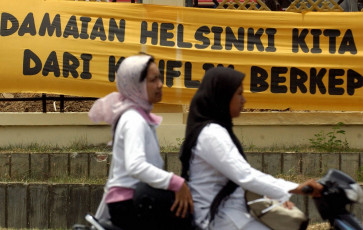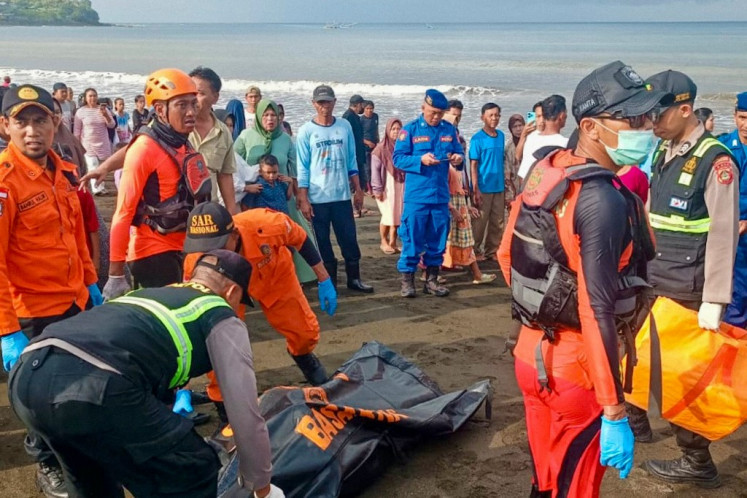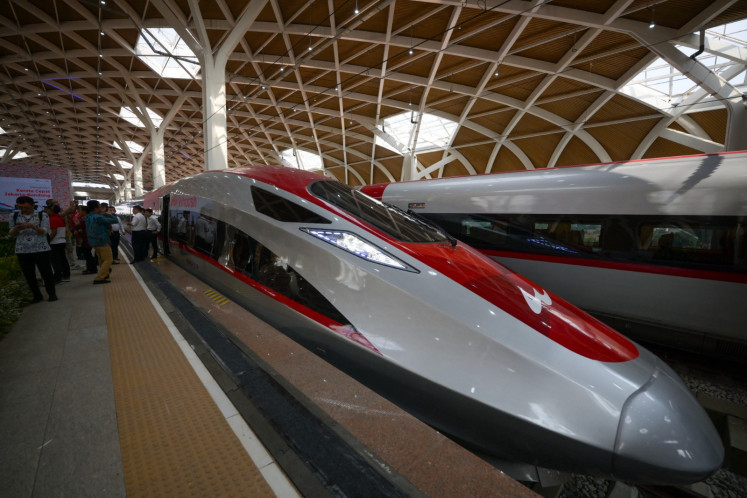Popular Reads
Top Results
Can't find what you're looking for?
View all search resultsPopular Reads
Top Results
Can't find what you're looking for?
View all search resultsDisaster-resilient urbanites
Several cities such as Mataram in West Nusa Tenggara, Palu in Central Sulawesi and, recently, Kalianda in Lampung and Banten have experienced various natural disasters, from earthquakes and tsunami to volcanic eruptions
Change text size
Gift Premium Articles
to Anyone

S
everal cities such as Mataram in West Nusa Tenggara, Palu in Central Sulawesi and, recently, Kalianda in Lampung and Banten have experienced various natural disasters, from earthquakes and tsunami to volcanic eruptions. Other disasters mostly affected by uncontrolled urbanization such as floods, landslides, drought, forest fires and so on are easily found in many cities. Various recovery efforts have started and are being carried out by the government at the national and local levels, as well as self-help efforts among citizens.
Disaster management, especially those related to climate change, comprises mitigation and adaptation. Mitigation relates to the causes of environmental degradation that leads to climate change, whereas adaptation covers all actions or efforts related to the impact. For example, in 2016 the government set targets in its first “nationally determined contribution”. For mitigation, the government aims to reduce emissions by 29 percent by 2030. For adaptation, the government aims to reduce the risks of disaster impacts on agriculture, energy, forestry, marine and other sectors.
Despite many efforts from the global to the local level and various initiatives in disaster risk reduction and management, people remain highly vulnerable to the impacts of disasters. Moreover, for cities in developing countries, most public infrastructure is unsustainable. The cost of damage caused by natural disasters suffered by ASEAN countries and its cities is averaging about US$4.4 billion annually, according to the ASEAN Agreement on Disaster Management and Emergency Response in 2016.
The Organization for Economic Cooperation and Development (OECD) in its latest study entitled “Building Resilient Cities: An Assessment of Disaster Risk Management Policies in Southeast Asia” revealed some alarming findings. It reported that most cities in Southeast Asia still lack proper studies and planning regarding vulnerability and assessment of disaster risks. As a result, development planning such as land use management refers very little to the risk of disaster.
Disaster management has not yet become a priority in either policy development or financial arrangement. Thus many formal institutions responsible for disaster management still lack authority and operational budgets, which adds to the classic problem of weak coordination between various levels of government that causes disaster management efforts to remain far from synergistic and integrated. There is low public awareness about what to do during disasters. Moreover, most people are still not well informed about the implementation of mitigation and adaptation efforts.
In the same publication, the OECD provides several recommendations for changes to disaster risk management to increase urban resiliency in Southeast Asia. In Indonesian cities, the focus of change must be directed at the local city governments that would be directly affected by disasters. Municipalities must immediately develop local resilience action plans suitable to their own urban conditions. This effort must involve all urban stakeholders and also prioritize the collection of empirical data and tangible indicators as the main references.
Urban policies and regulations on land use management and planning must adopt the results of the study and evaluation of disaster risks so that investments can be better targeted while decreasing the burden of environmental degradation and the risk of damage to urban infrastructure. The scheme and preparation of funding for urban development must also reflect the “potential” of disaster to minimize the costs of responsive emergency and recovery efforts. The involvement of the private sector and insurance firms can also be explored and optimized in an integrated manner.
Today, disaster management efforts facilitated by city administrations must be able to take advantage of the unlimited virtual world. Building human resources can easily be done through social media and access to online information. Experience and knowledge from other cities or from previous disasters can be shared and used as learning material for urban disaster management.
Communication technology can also be used in innovations to early warning systems, emergency services and various responsive actions in the event of disaster. What might be more important is its use for innovations in integrating disaster management into the education system. In that way, the community would naturally transform into a resilient society so that mitigation and adaptation efforts to respond to climate change are no longer dependent on the government alone.
__________________________
The writer, who holds a PhD in engineering from the University of Kitakyushu, Japan, is affiliated with the Institute for Global Environmental Strategies, Kitakyushu Urban Center. He has won various international urban design competitions.









